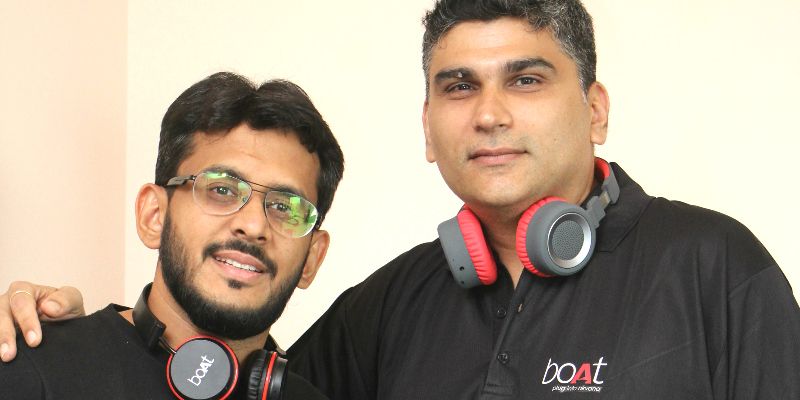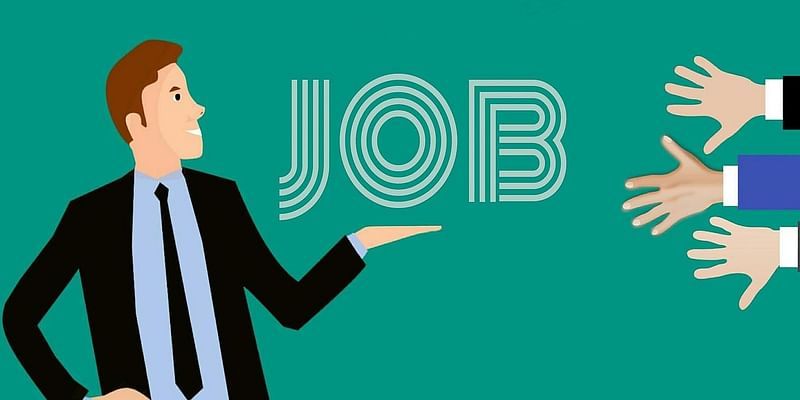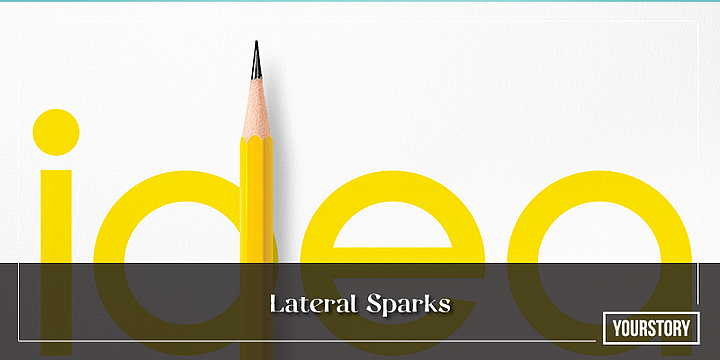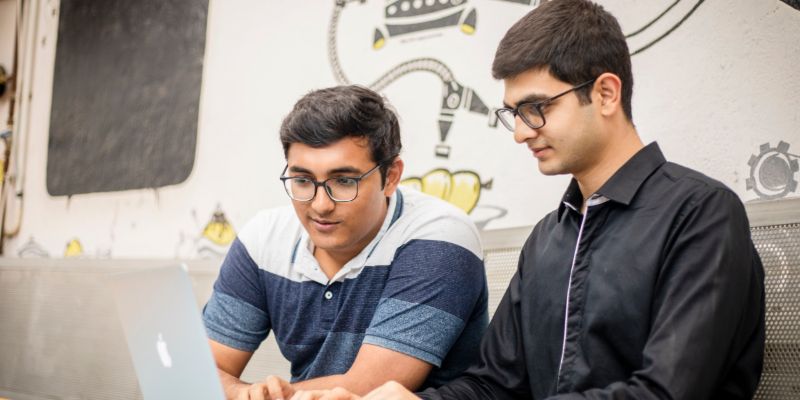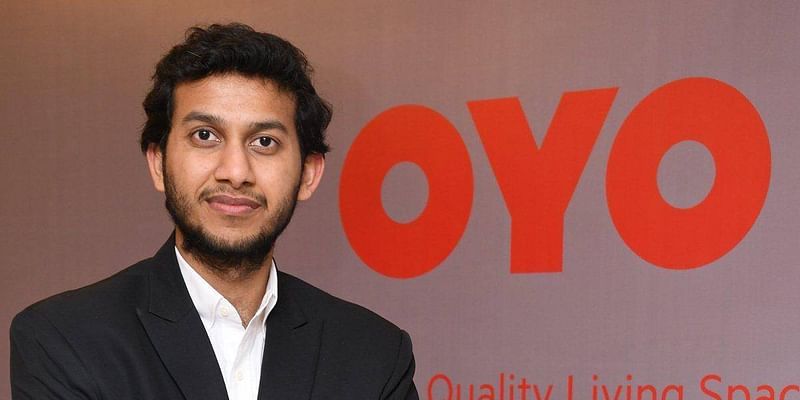Music and millennials: how boAt tripled its revenues in a year and now sells 4 products every minute
This Delhi-based startup forced the likes of JBL to cut prices in India. And now it's on the road to become a Rs 500-crore consumer electronics company by 2024.
boAt began life as a consumer electronics startup in 2016 with the sole aim of bringing affordable, durable, and more importantly, ‘fashionable’ audio products and accessories to millennials. Today, having completed two years of selling earphones, headphones, speakers, travel chargers and premium rugged cables, it has clocked more than Rs 100 crore in domestic sales alone. From just two founders, it has grown to a 25-member team, opened offices in Delhi and Mumbai, signed up celebrity brand ambassadors, and created a community of over 800,000 ‘boAtheads’.
Now, what are ‘boatheads’? Urban Dictionary says the term was an insult used to describe members of Singapore’s notorious gaming clan - The Merry Boat Heads. But India’s boAt seems to have turned that reference on its ‘head’ by making it sound like an aspirational term for its millennial buyers. So, anyone who owns a boAt product is anointed a ‘boAthead’ and made a part of the clan.
And going by the sales numbers, there are many.
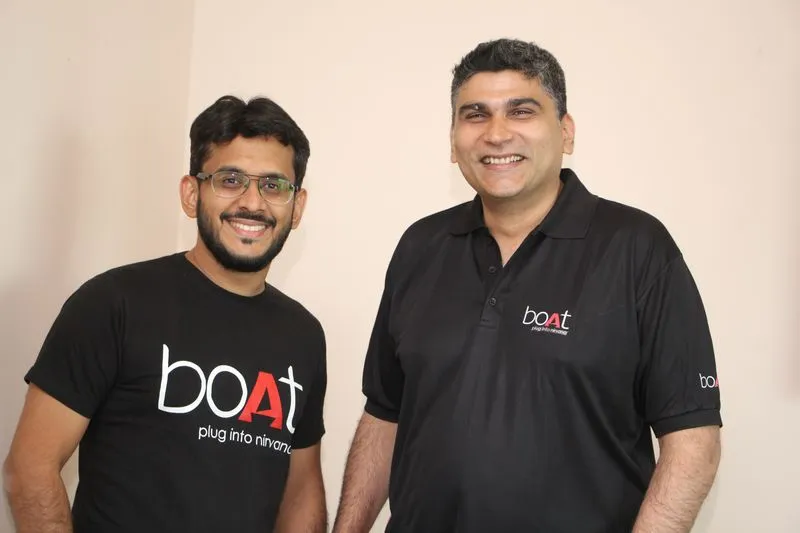
According to filings with the Registrar of Companies (RoC), boAt’s FY2018 revenues grew to Rs 108 crore from only Rs 27 crore in FY2017. That is 3x growth year on year. The young consumer electronics player claims that it now sells over 6,000 units per day with four units sold every minute. It also adds one boAthead to its family every three minutes. boAt is now projecting sales of Rs 500 crore over the next five years.
The latest addition to its portfolio has been soundbars, a category it reckons will ‘explode’ in the time to come, with the growing number of savvy home audio consumers in India who want a quality entertainment experience from the confines of their living rooms.
So, how did a homegrown consumer electronics brand carve out its own place in a cluttered market? So much so that, according to its founders, global majors like JBL has had to resort to a ‘downward revision’ of its product prices in India to compete with boAt in the affordable audio segment.
Not just consumer electronics but lifestyle accessories
boAt Co-founder and CEO Aman Gupta tells YourStory,
“We have tried to change the consumer mindset. We don’t sell our products as electronics only. We sell them as lifestyle accessories. We are trying to portray that our products can be a part of your everyday fashion.”
This strategy was on display at the recent Lakmé Fashion Week in Mumbai where boAt products were the only accessories sported by the models when they walked down the ramp for one of the designers. More such fashion partnerships are in the offing, reveals Aman.

He says that style has always been integral to the consumer electronics company's offerings, and he sees it as one of the brand’s top three features along with sound quality and durability.
The company reckons that consumer acceptance has grown with audiophiles more willing to trust boAt products now. This is reflected in the 50 percent growth in its average ticket size. “It has gone up from Rs 500 to Rs 750. I believe there is a greater willingness to invest,” Aman states.
Some products are runaway hits. Sports earphones and Bluetooth speakers, for instance, have caught the fancy of India’s increasingly fitness-focussed millennials. Consumers today pick and choose accessories that fit in with their workouts, runs, hikes, trails, etc., where one needs to filter out a lot of ambient sounds.
A verified user on Amazon.in, who purchased the boAt Stone 200 Portable Bluetooth Speakers, wrote: “I bought it for hiking and it served the purpose, went all out for 12 hours backup as promised, in snow, rain and dirt on my bike to Ladakh. This is a sturdy little beast with great loud sound quality clearly distinguishable on a bullet.”
[Also read: Audio tech giant Bose is entering the AR space with a new product and up to $50M]
Offline growth and celeb word-of-mouth
boAt’s growth has also been driven by its distribution partnerships. Besides selling on Amazon, Flipkart, Myntra and Jabong, the consumer electronics company is now retailing at Croma outlets, and testing shop-in-shop concepts to give potential buyers an ‘immersive experience’ of its products. Offline now accounts for 20 percent of its sales, and the company is exploring more distributor tie-ups in South India. “We also plan to start selling on our own website by 2020,” states Aman.
While boAt’s core audience in the first two years has largely been in the metros, it has identified a sizeable audience in tier-II cities as well. Aman says the consumer electronics company enjoys close to 95 percent brand awareness in these locations as a result of ‘positive word-of-mouth’.
He says, “We operate under the FMCG category. Our products have consistently performed well due to the importance on quality and marketing. Our competitive advantage lies in our focus on consumer needs, desires and behaviour patterns.”
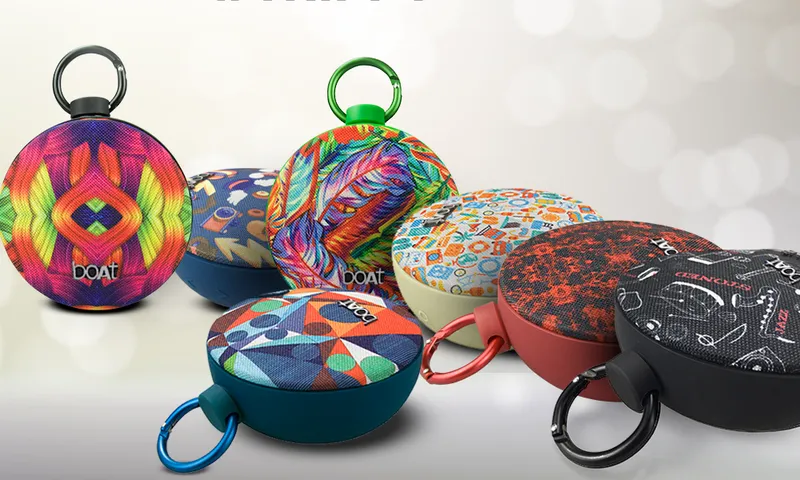
Much of the buzz boAt has picked up can be attributed to its brand ambassadors who represent India’s most followed passions (and obsessions) - Bollywood and cricket. Even though two of its brand ambassadors, cricketers Hardik Pandya and KL Rahul, were involved in a recent controversy, Aman believes celebrity word-of-mouth has helped widen the company’s reach considerably.
He explains,
“Jacqueline Fernandez [Bollywood actor] is one of our endorsers. Whenever she does a post for us, it gets millions of likes because she has that wide base of followers across the country. It helps us solve the challenge of creating brand awareness in smaller cities.”
[Also read: The future of personal audio: hearables, voice control, and freedom from wires]
New products, newer territories
Last May, boAt raised its first round of funding (Rs 6 crore) from Fireside Ventures, an early-stage VC firm that backs consumer brands. These funds will be deployed in building newer products and expanding the customer base.
Kanwaljit Singh, Managing Partner, Fireside Ventures, says,
“(boAt) is one of the strongest brands in our portfolio. We strongly believe that it has all the right mix to scale and become a household brand in the coming years.”
While there is a lot of ground left to cover in India itself, especially in non-urban areas, it plans to expand internationally in a few years. After all, quality products at ‘logical price points’ can be a top draw anywhere in the world.
Explains Co-founder Sameer Mehta,
“We want to strengthen our foothold in India first and then enter the international market. Our efficient and lean business model, coupled with targeted business insights, allows the brand to enjoy high margins and double-digit profits from the very first sale itself.”

At present, boAt products are made through contract manufacturing in China. If it starts manufacturing in India, it can do away with import duties, and pass on the cost advantages to the customer. The founders, however, didn’t reveal any make-in-India plans.
[Also read: Starting off with Rs 7 lakh, this startup has generated Rs 10 Cr in three years: the story of CellBell]
Future growth drivers
boAt believes that the rising trend of audio sets bundled with smartphones could be its next channel of growth. Almost all major phone makers have or are in the process of stitching partnerships with audio companies. Samsung has Harman and JBL, Apple has Beats, Huawei has Sennheiser, and so on.
These manufacturers are pulling in new customers with attractive bundled offers that spare people from having to invest in headphones or earphones separately.
“That is where the market is moving,” Aman points out.
According to a Future Market Insights report, India’s mobile phone accessories market is estimated to exceed $3.5 billion by 2026. boAt reckons that the massive growth in online video consumption will be a significant driver of demand in the near future, attracting a diverse set of customers.
Subsequently, the burgeoning market has given birth to competition too.
boAt has to contend with not only audio accessories makers, but also phone manufacturers like Xiaomi, Realme, and others, who have expanded their range of affordable earphones, wireless earbuds, and portable speakers in a bid to make India buy more, and more frequently.
“We have to keep innovating as a brand. That is why customers prefer us,” says Aman, adding, “We have fulfilled only 20 percent of the demand. The market is huge, and we have to get our team and finances right to serve it.”






